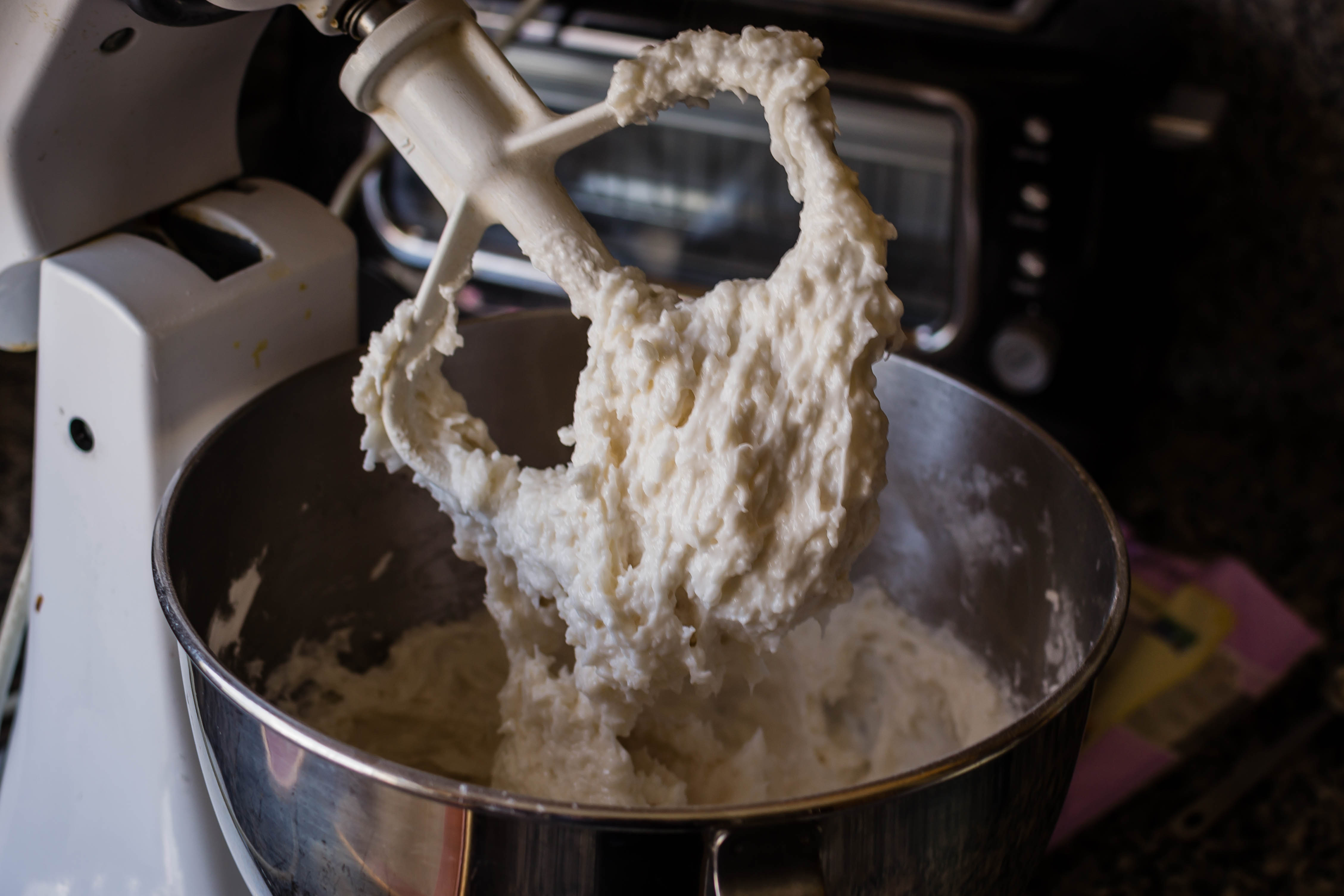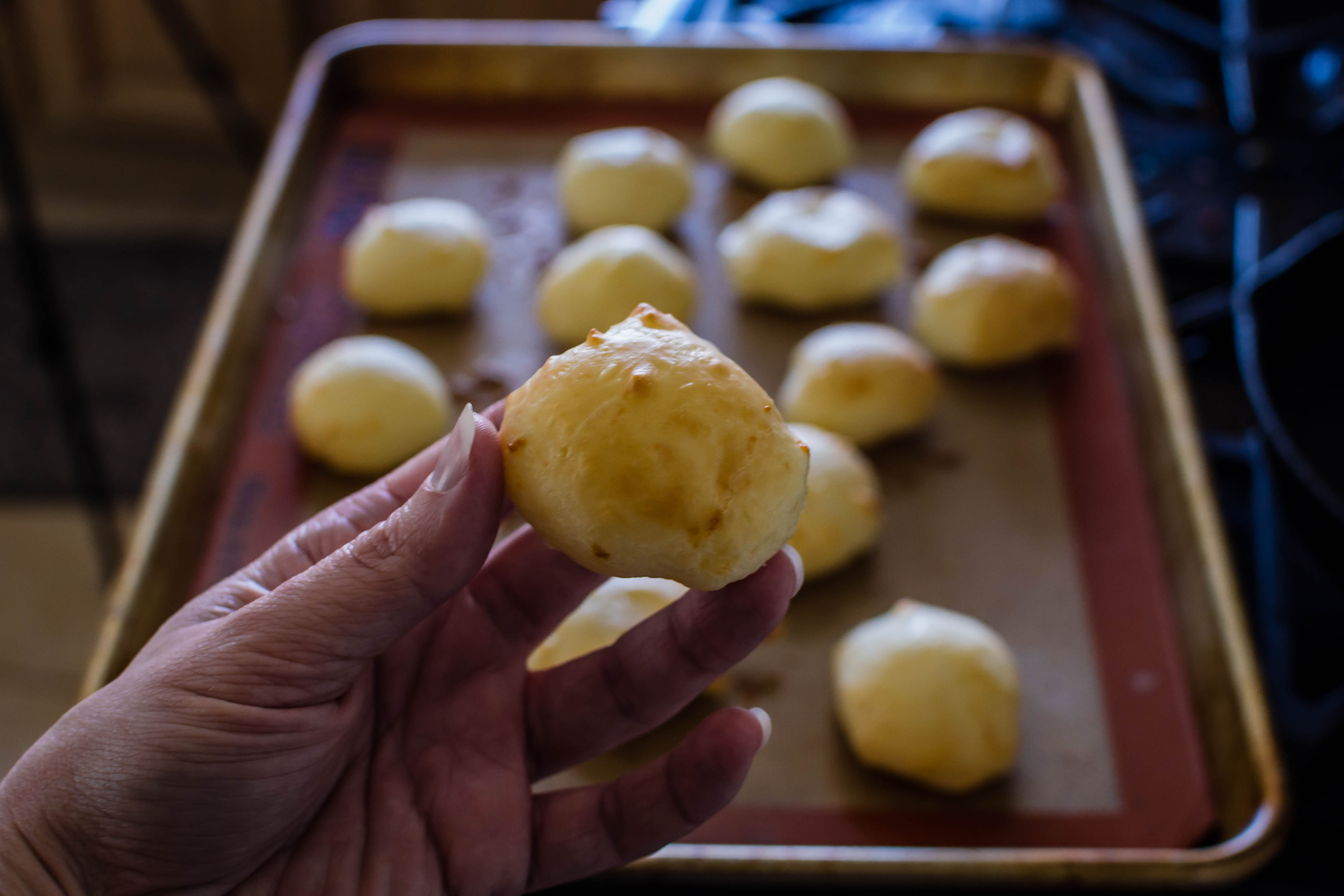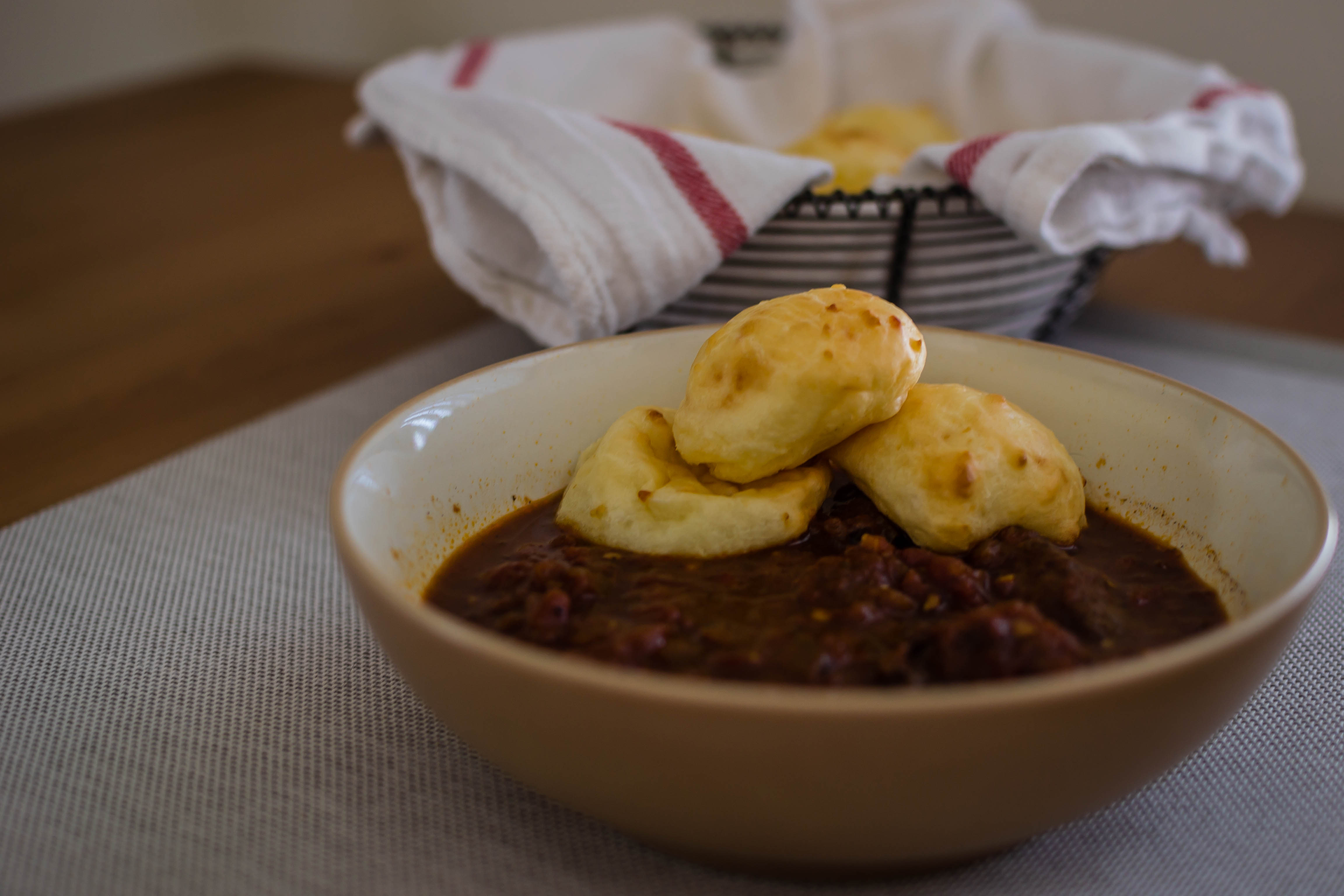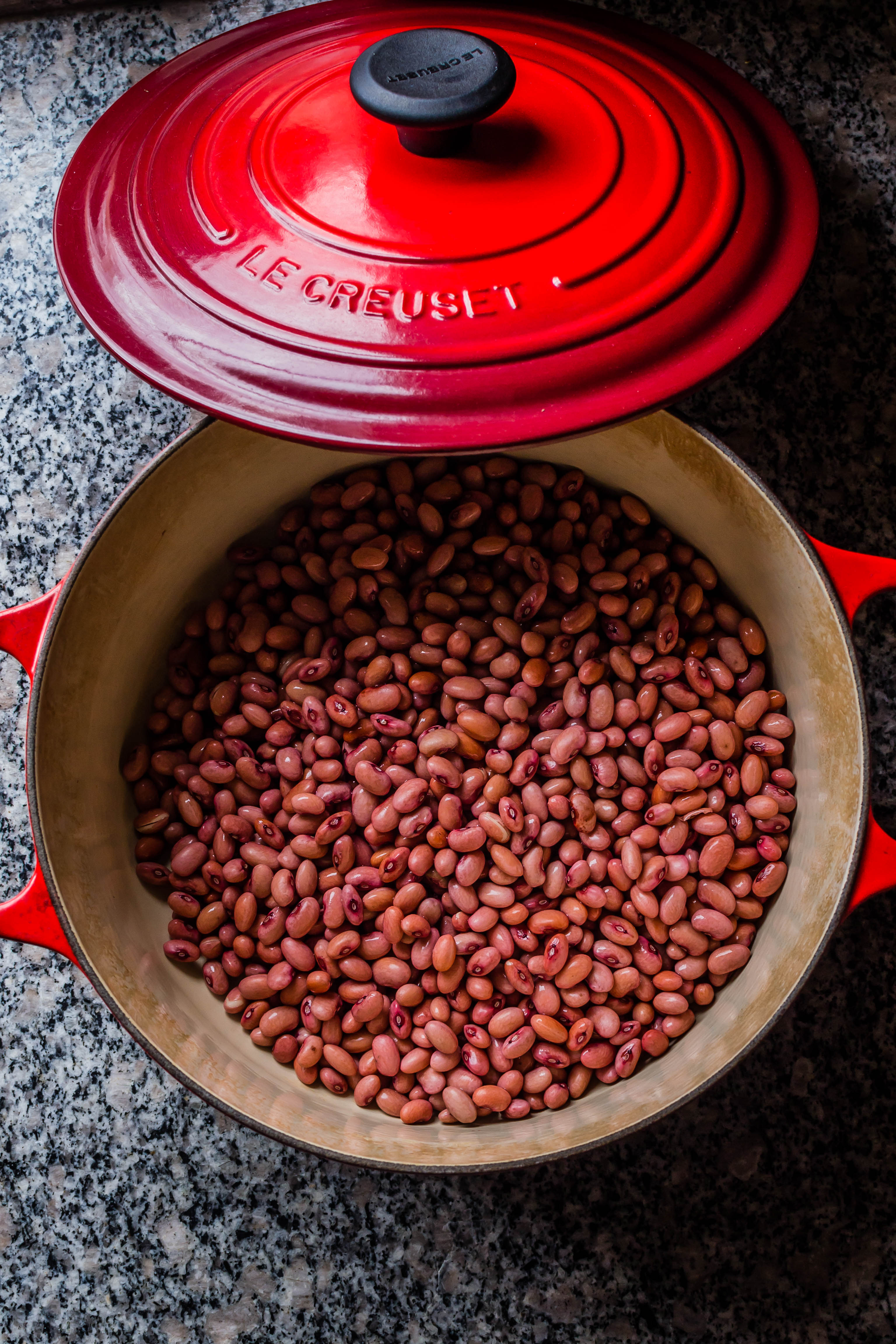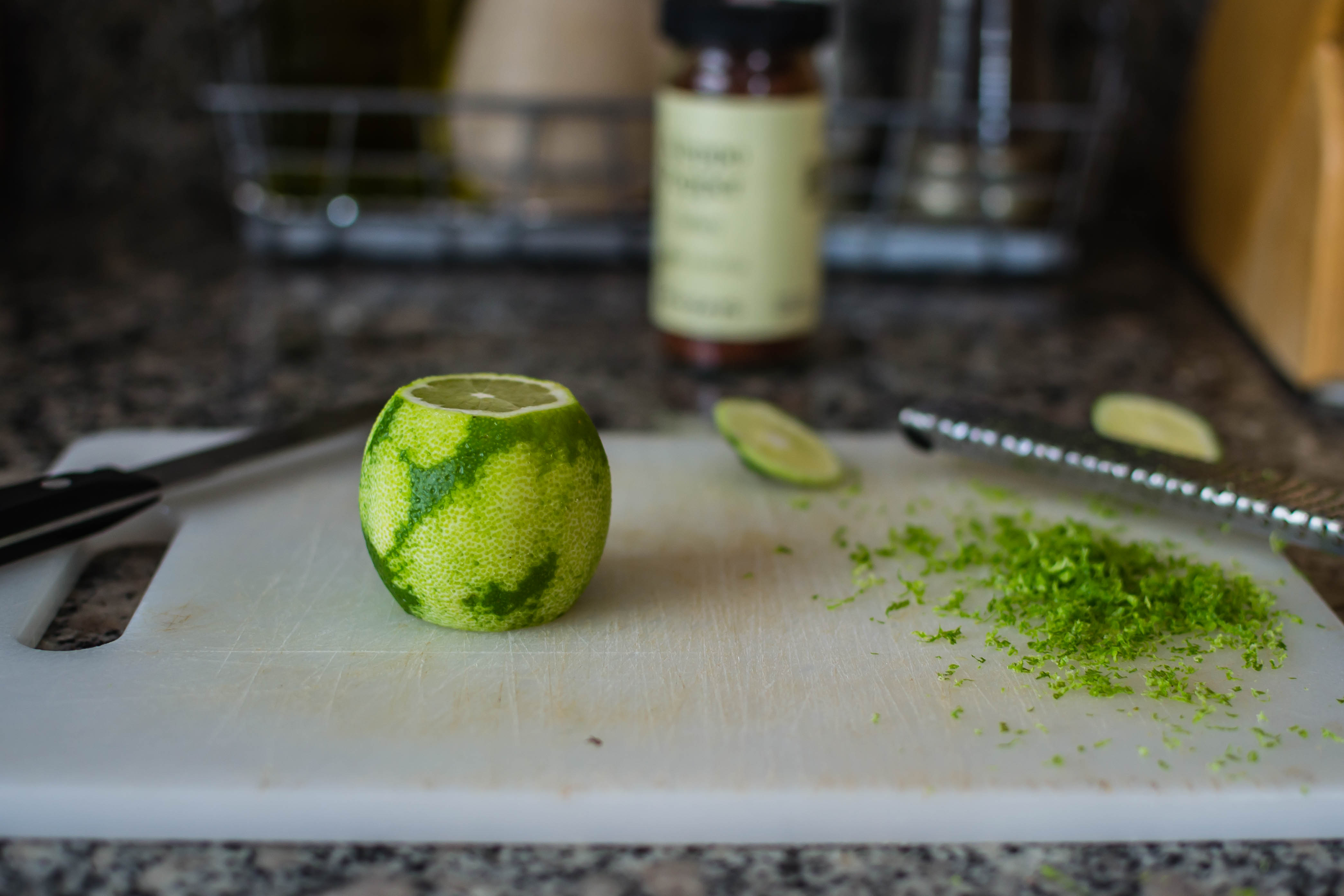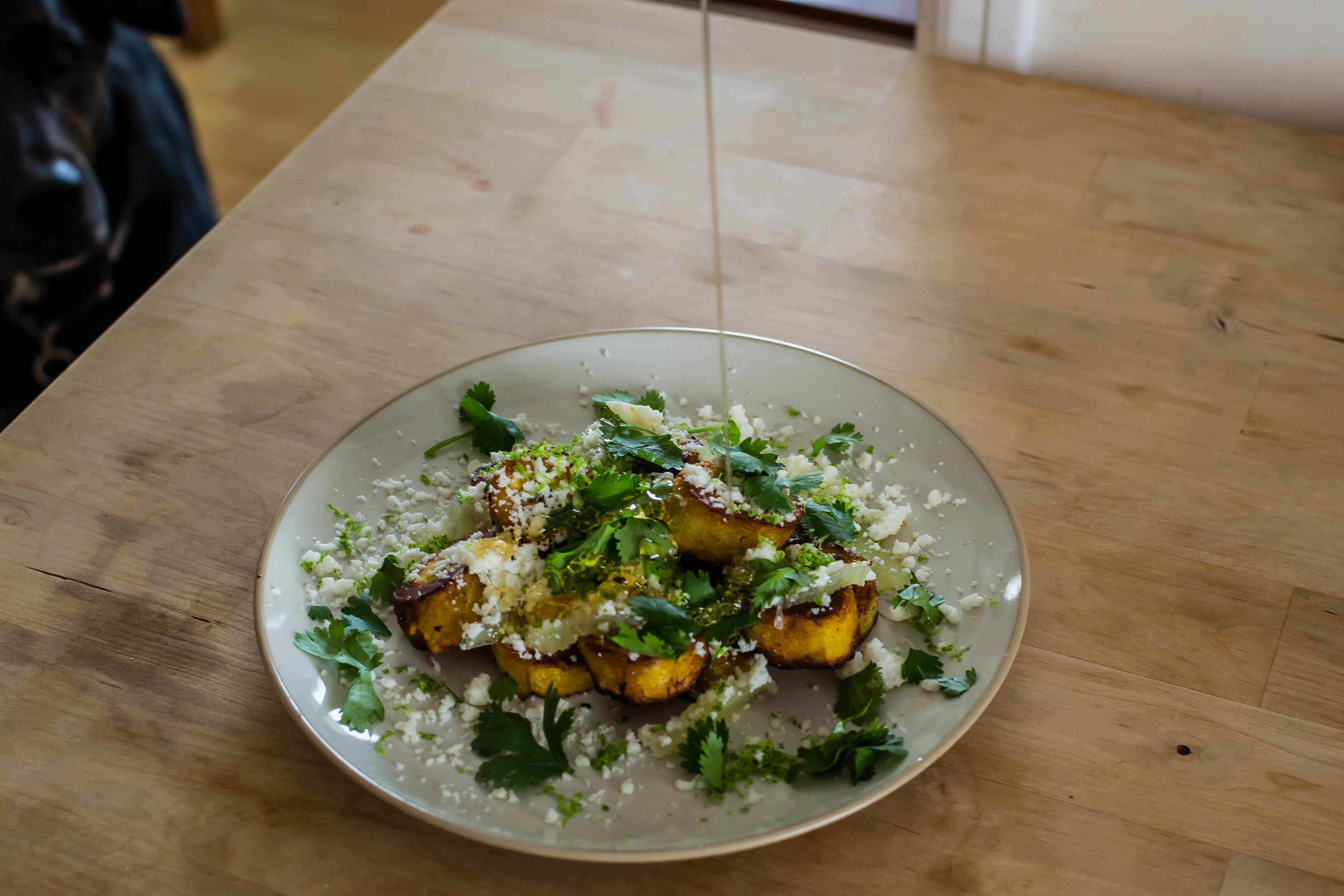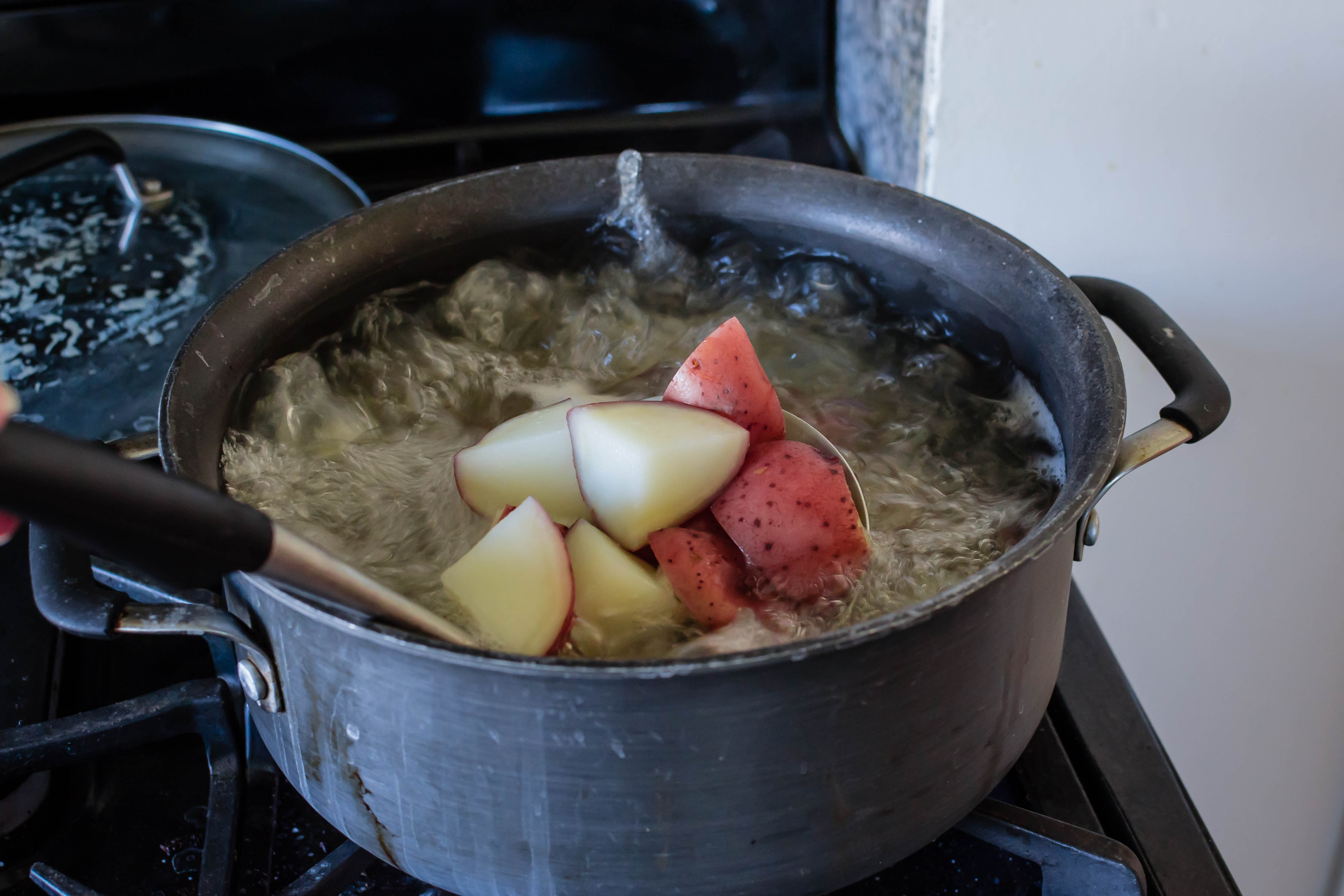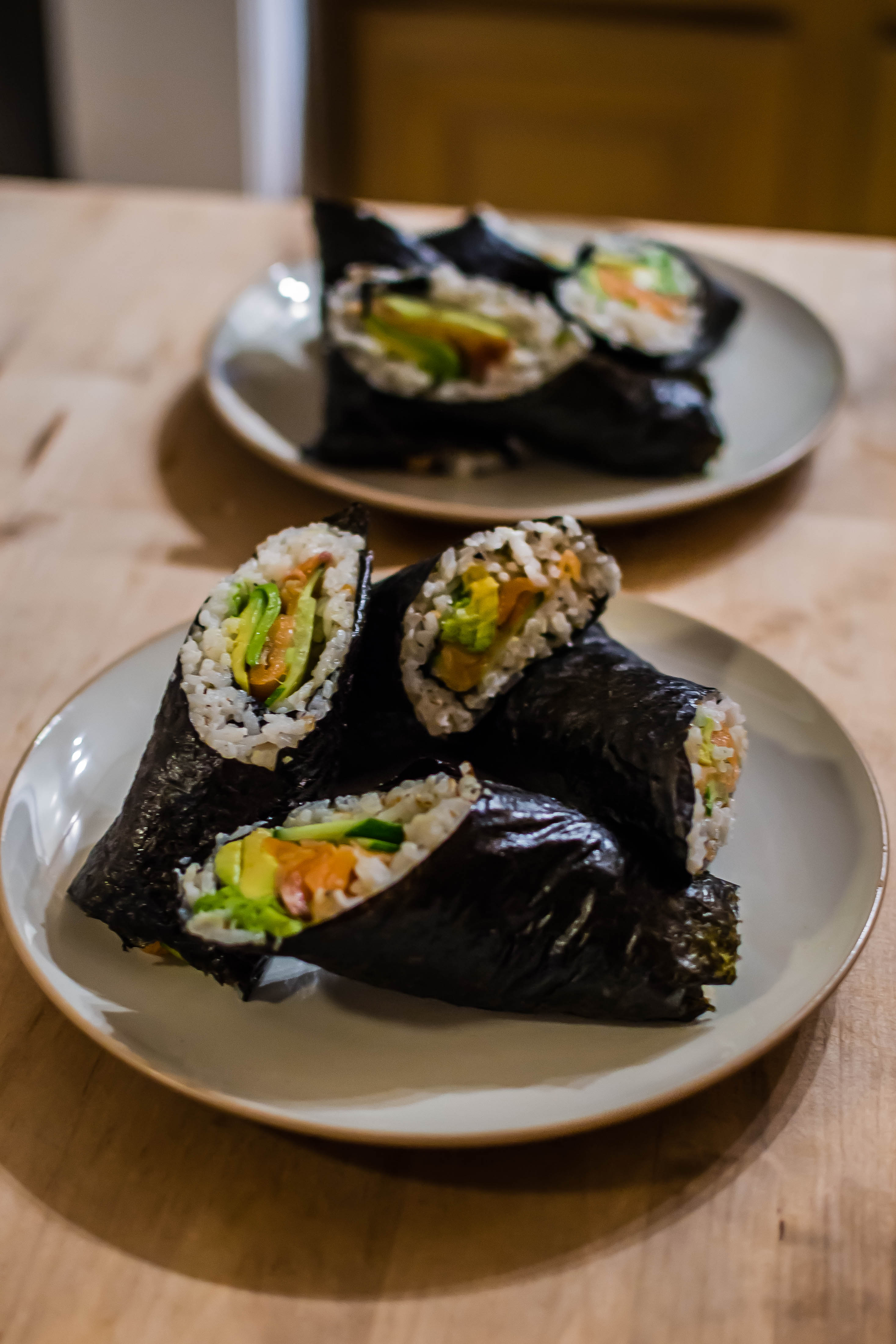 This is one of those meals we have all the time but it never occurs to me to post here. It’s just a weeknight meal. It doesn’t feel “impressive” or “blogworthy,” but as I was making it the sixth-or-so time in so many months, I finally asked myself why. Well, because, I answered (what? You don’t have these kind of conversations with yourself?), it’s so… simple. There’s not much to actually cook, it doesn’t take long, the ingredients are (mostly) really easy to find, and… why did I think this wasn’t worth posting again?
This is one of those meals we have all the time but it never occurs to me to post here. It’s just a weeknight meal. It doesn’t feel “impressive” or “blogworthy,” but as I was making it the sixth-or-so time in so many months, I finally asked myself why. Well, because, I answered (what? You don’t have these kind of conversations with yourself?), it’s so… simple. There’s not much to actually cook, it doesn’t take long, the ingredients are (mostly) really easy to find, and… why did I think this wasn’t worth posting again?

 We’ve been calling these “sushi burritos” mainly due to size and shape, but they really are just unsliced maki rolls, filled with avocado, cucumber, pickled ginger, and a generous portion of smoked salmon. “No raw fish?” you’re thinking, “so how is that sushi?” Ah, but “sushi” refers not to the fish – though that is probably what many of us call to mind first when we hear the word – but the rice: short grain, combined with (usually) seasoned rice vinegar, and then wrapped, covered, or rolled with other ingredients.
We’ve been calling these “sushi burritos” mainly due to size and shape, but they really are just unsliced maki rolls, filled with avocado, cucumber, pickled ginger, and a generous portion of smoked salmon. “No raw fish?” you’re thinking, “so how is that sushi?” Ah, but “sushi” refers not to the fish – though that is probably what many of us call to mind first when we hear the word – but the rice: short grain, combined with (usually) seasoned rice vinegar, and then wrapped, covered, or rolled with other ingredients.
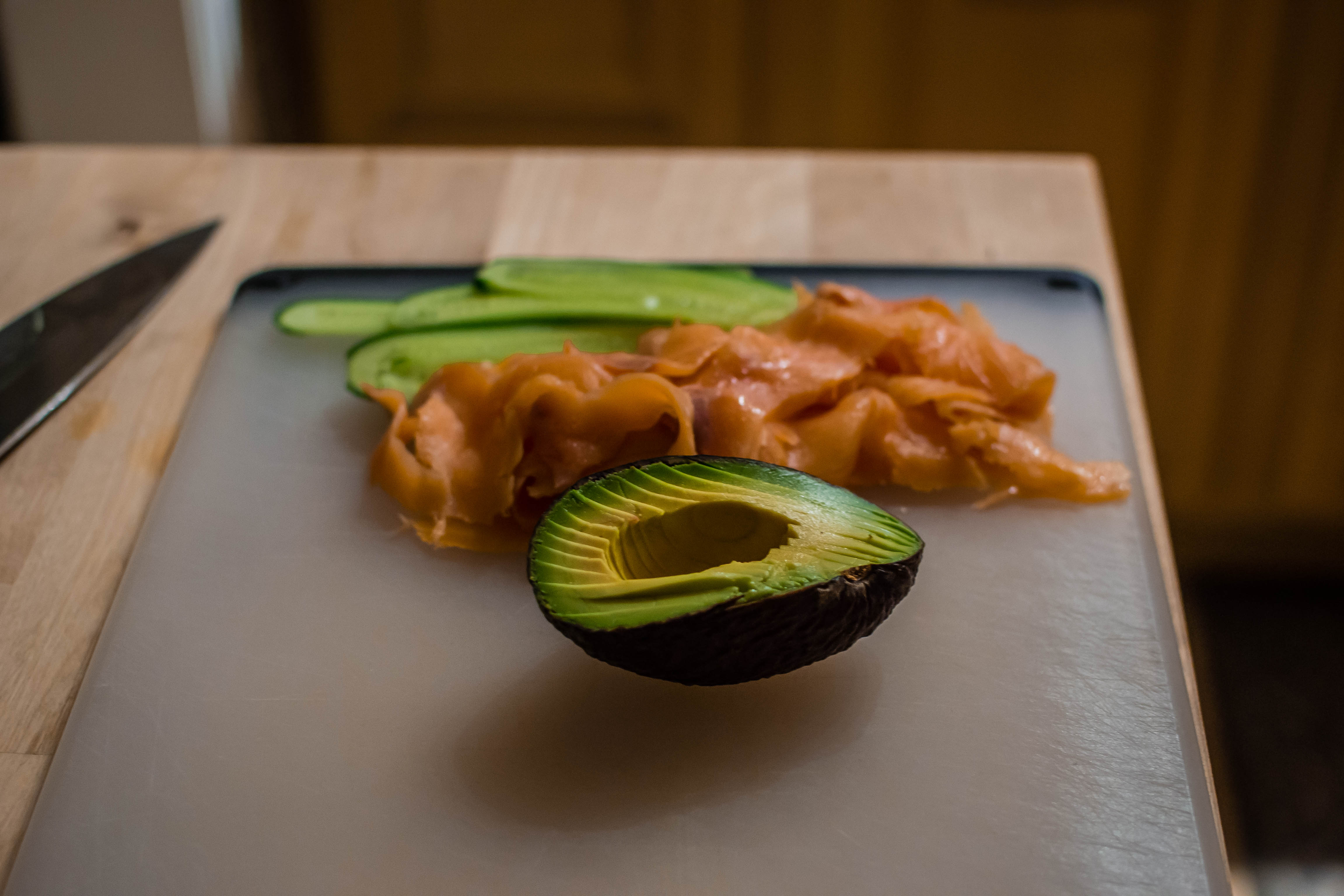 Here I’m using smoked salmon instead of the more traditional uncooked fish. Though I agree it would never stand up against a beautiful slice of raw ahi, the substitution is nice for a few reasons. First, especially if you are limiting your trips to the grocery store right now, you don’t have to worry about using it immediately – convenient if your avocado is less ripe than you’d hoped. Second, it tends to be much less expensive. Third, the texture is not quite the same, but it is comparable – on the tongue this does not feel like cooked fish, and if you can find one that is not particularly smoky, the salmon flavor comes through nicely. You could also use a cured product like gravlax for an even purer salmon-y flavor. And if you aren’t comfortable purchasing or consuming raw fish at all, this is an easy workaround.
Here I’m using smoked salmon instead of the more traditional uncooked fish. Though I agree it would never stand up against a beautiful slice of raw ahi, the substitution is nice for a few reasons. First, especially if you are limiting your trips to the grocery store right now, you don’t have to worry about using it immediately – convenient if your avocado is less ripe than you’d hoped. Second, it tends to be much less expensive. Third, the texture is not quite the same, but it is comparable – on the tongue this does not feel like cooked fish, and if you can find one that is not particularly smoky, the salmon flavor comes through nicely. You could also use a cured product like gravlax for an even purer salmon-y flavor. And if you aren’t comfortable purchasing or consuming raw fish at all, this is an easy workaround.
 Aside from acquiring the ingredients, the most intimidating component of sushi for many people is the rolling: spreading the rice evenly over the nori, trying to keep all those central components together, ending up with a nice, tight roll and good shape. For me, though, it’s the slicing. That’s when things start to come apart: when you disrupt the structural integrity of the nori, now nice and flexible after absorbing some of the moisture and warmth of the rice, by running a usually-not-sharp-enough knife through it. Here I forgo all but one slice, drawing my sharpest knife just once through each long roll, on a diagonal, and calling it a day. We get to the eating part faster that way.
Aside from acquiring the ingredients, the most intimidating component of sushi for many people is the rolling: spreading the rice evenly over the nori, trying to keep all those central components together, ending up with a nice, tight roll and good shape. For me, though, it’s the slicing. That’s when things start to come apart: when you disrupt the structural integrity of the nori, now nice and flexible after absorbing some of the moisture and warmth of the rice, by running a usually-not-sharp-enough knife through it. Here I forgo all but one slice, drawing my sharpest knife just once through each long roll, on a diagonal, and calling it a day. We get to the eating part faster that way.
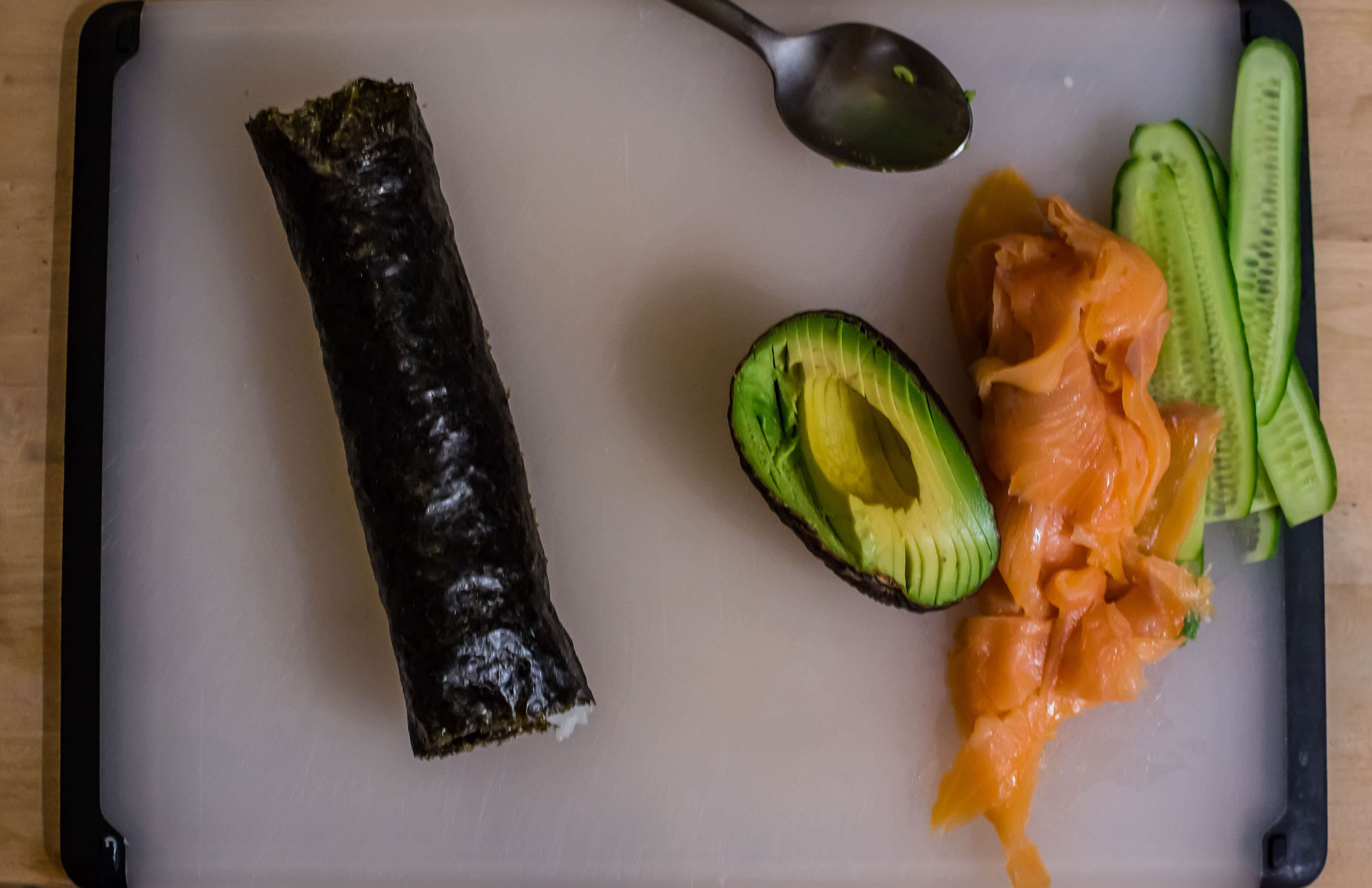
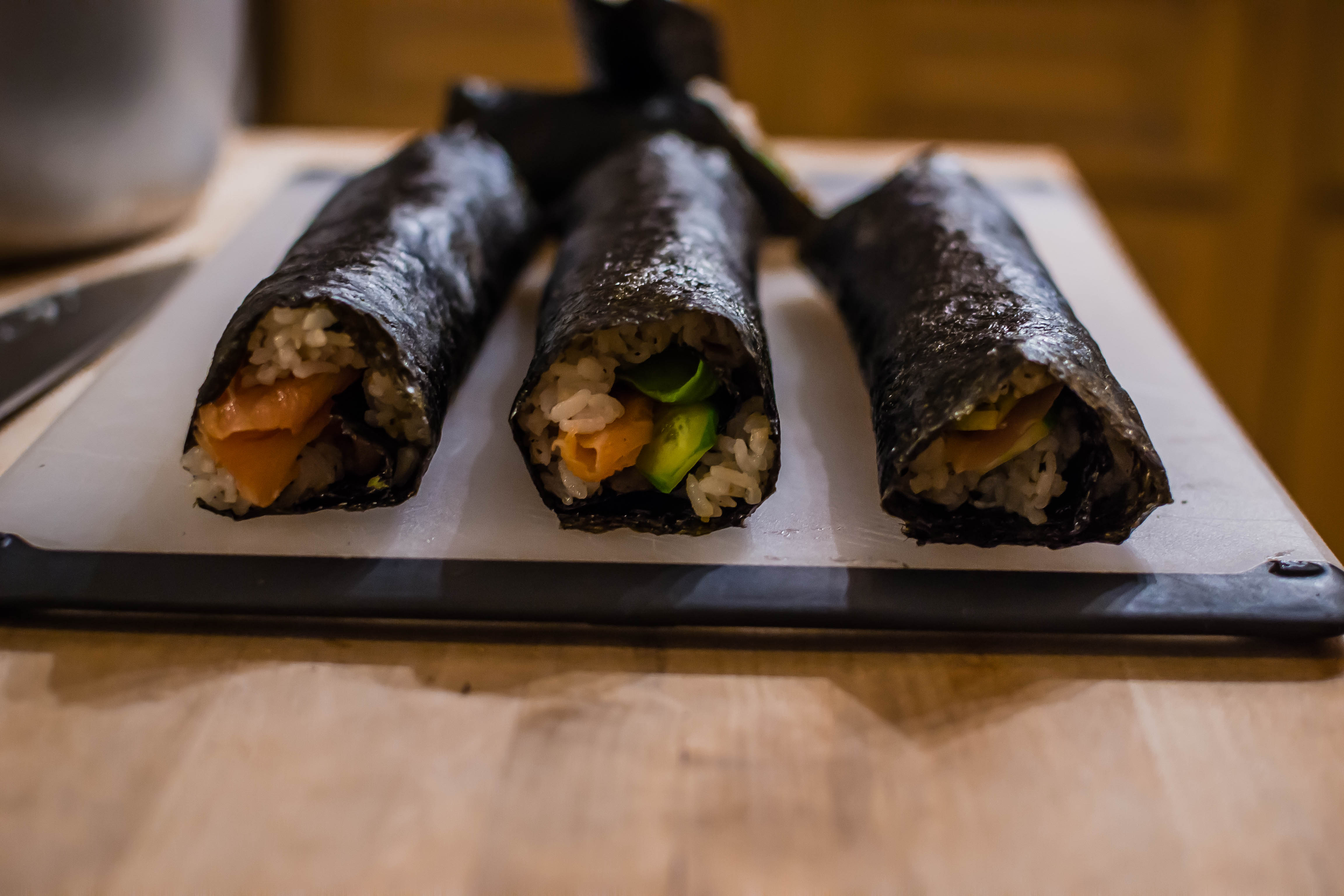 I noted above that the ingredients for this meal are mostly easy to find. If you have an Asian market nearby, they are very easy to locate. If you don’t, your grocery store probably has an “ethnic foods” aisle with most of these ingredients: the rice vinegar, nori sheets, and pickled ginger (the same stuff, often lightly pink, that comes on your plate next to the blob of wasabi at your local sushi joint) will more than likely be there. If you can’t find wasabi mayonnaise, that same aisle will probably have various options for prepared wasabi – I just get a tube of it and add it to regular mayonnaise until the degree of nostril-tingling spice suits my fancy.
I noted above that the ingredients for this meal are mostly easy to find. If you have an Asian market nearby, they are very easy to locate. If you don’t, your grocery store probably has an “ethnic foods” aisle with most of these ingredients: the rice vinegar, nori sheets, and pickled ginger (the same stuff, often lightly pink, that comes on your plate next to the blob of wasabi at your local sushi joint) will more than likely be there. If you can’t find wasabi mayonnaise, that same aisle will probably have various options for prepared wasabi – I just get a tube of it and add it to regular mayonnaise until the degree of nostril-tingling spice suits my fancy.
 I’m also using furikake here (same aisle), a rice seasoning that is basically a mixture of sesame seeds and finely diced nori, seasoned with salt and sugar. My current container also has bonito flakes, and there are spicy varieties too. Bonus: furikake is also a madly delicious seasoning mixture for popcorn.
I’m also using furikake here (same aisle), a rice seasoning that is basically a mixture of sesame seeds and finely diced nori, seasoned with salt and sugar. My current container also has bonito flakes, and there are spicy varieties too. Bonus: furikake is also a madly delicious seasoning mixture for popcorn.
 If you are efficient about all this, you can prep your vegetables and get everything else ready in the time it takes the rice to cook. My rice cooker usually requires about 25 minutes, and I find I can usually have everything else prepped and laid out in that time span. (Yes, I use a rice cooker for this instead of cooking my rice on the stove. I like the insurance that it offers, since it switches to “keep warm” when it’s done instead of, you know, continuing to cook into a blackened mess because I forgot to set a timer and got busy with other tasks…).
If you are efficient about all this, you can prep your vegetables and get everything else ready in the time it takes the rice to cook. My rice cooker usually requires about 25 minutes, and I find I can usually have everything else prepped and laid out in that time span. (Yes, I use a rice cooker for this instead of cooking my rice on the stove. I like the insurance that it offers, since it switches to “keep warm” when it’s done instead of, you know, continuing to cook into a blackened mess because I forgot to set a timer and got busy with other tasks…).
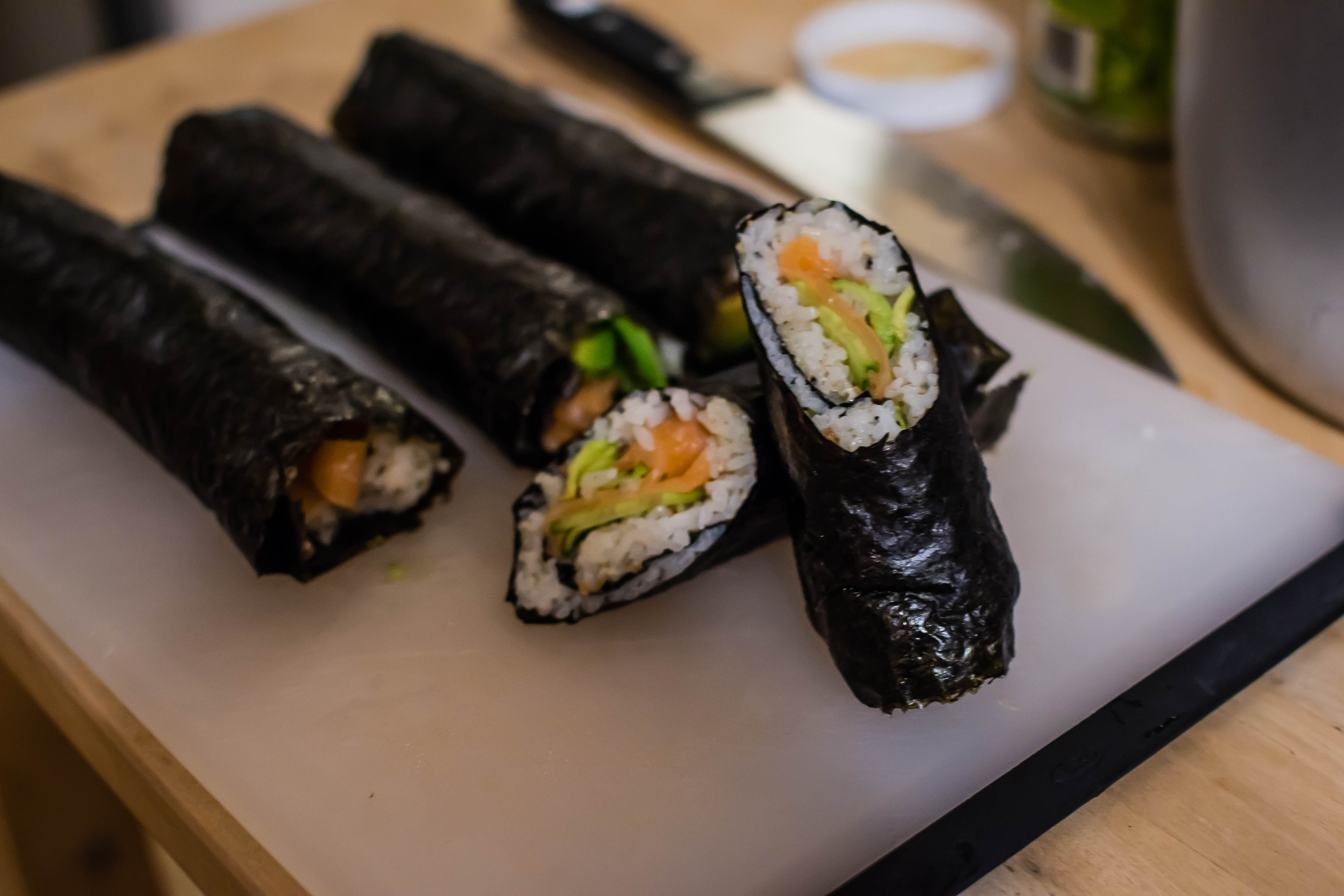 The play of flavors here, as you know if you enjoy sushi, is so comforting and so, just, good. The avocado and salmon are rich and fatty, so the watery crunch of cucumber and the pickled ginger punch provide a nice foil. The wasabi mayonnaise is just background spiciness, and the nori, warmed and moistened by the rice, takes on a chewiness I really like against the seasoned rice. You could serve this however you want, though we like two rolls a-piece, each one sliced in half at a steep angle. No need for utensils here – we just pick them up, pinch the uncut ends together a bit to avoid anything escaping, and enjoy the resistance of the chewy nori wrapper with each bite. You could likely also wrap them into cones for a more traditional hand roll shape, though I’ll admit I haven’t tried it that way yet, and thus I’m including instructions only for my method.
The play of flavors here, as you know if you enjoy sushi, is so comforting and so, just, good. The avocado and salmon are rich and fatty, so the watery crunch of cucumber and the pickled ginger punch provide a nice foil. The wasabi mayonnaise is just background spiciness, and the nori, warmed and moistened by the rice, takes on a chewiness I really like against the seasoned rice. You could serve this however you want, though we like two rolls a-piece, each one sliced in half at a steep angle. No need for utensils here – we just pick them up, pinch the uncut ends together a bit to avoid anything escaping, and enjoy the resistance of the chewy nori wrapper with each bite. You could likely also wrap them into cones for a more traditional hand roll shape, though I’ll admit I haven’t tried it that way yet, and thus I’m including instructions only for my method.



Smoked salmon sushi rolls
4 whole rolls (serves 2)
30-40 minutes, depending on how fast your rice cooks (some rice cookers take longer than others, and can differ from the speed at which rice cooks on the stove)
2 cups short grain white rice, cooked on the stove or in a rice cooker
¼ cup seasoned rice vinegar (if yours is unseasoned, stir in 1 teaspoon sugar and 1 teaspoon salt)
optional: 2-3 tablespoons furikake seasoning
about ½ a small cucumber, cut into long planks as thin as possible
4-6 ounces lightly smoked salmon, cut or torn into small pieces
½ ripe avocado, very thinly sliced
1-2 tablespoons pickled ginger (also called sushi ginger)
4 sheets nori
1-2 teaspoons wasabi mayonnaise
- First, cook your rice. Use the time as it cooks to prep the other ingredients: thinly slice the cucumber using a knife or y-shaped vegetable peeler. Cut the avocado into very thin slices. Cut or tear the salmon into small pieces (this makes for easier eating). Fish out the appropriate amount of ginger from the container. Get everything laid out for easier construction.
- When the rice is done, immediately mix in the vinegar and, if using, the furikake seasoning. It will be extremely tart at first, but the vinegar flavor will mellow as the rice cools. Set it aside until it is cool enough to handle.
- To build the rolls, lay a piece of nori on your work surface, rough side (if there is one) facing up, short end toward you (most nori I’ve worked with is slightly rectangular, not exactly square). Spread a small amount of wasabi mayonnaise evenly over the nori, leaving a small border on all sides.
- Scoop on about ⅓ cup of rice and use your fingers to spread/sprinkle it somewhat evenly over the nori sheet, leaving a half inch or so border at the far edge. About half an inch in from the edge closest to you, place two slices of cucumber, then about a quarter of the salmon pieces, then a few thin slices of avocado, then a few pieces of ginger. As you can see in my photos above, these should be arranged horizontally from your perspective, and all fairly tightly together.
- Begin to roll the nori sheet by folding the short end closest to you up and over the row of fish and vegetables, then continue to roll until you get to the opposite side. The half-inch border you left rice-free will ensure a clean closure of sorts.
- I like to slice these just once, on a diagonal, with a very sharp knife. Then we pinch the uncut ends together a bit and eat them out of hand, like a small burrito.



